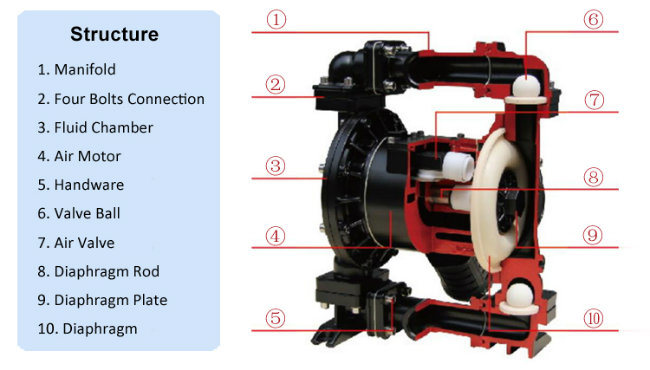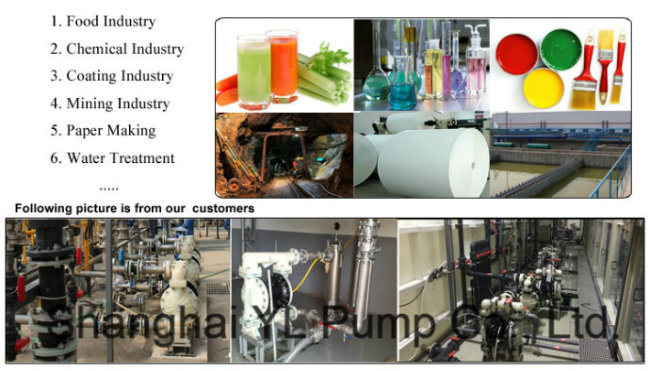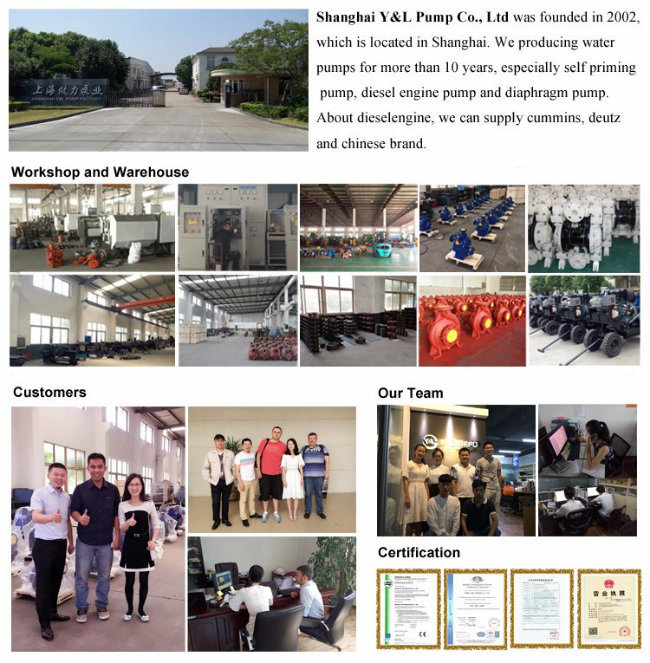1/2 or 3/4 Inch Aluminum Alloy Air Membrane Pump
Thermoforming is a manufacturing process used to shape plastic sheets into various custom design products. It involves heating a plastic sheet until it becomes pliable, then using a mold or a vacuum to form it into the desired custom shape.
Thermoforming and vacuum forming are both processes used to shape plastic sheets into specific forms. However, there are some differences between the two techniques:
Thermoforming is a versatile process that is widely used in industries such as packaging, automotive, aerospace, and medical. It offers advantages such as cost-effectiveness, quick turnaround times, and the ability to produce complex shapes with high precision.
Custom Thermoforming,Thermoforming Plastic Products,Thermoforming Process,ABS Thermoforming Dongguan Yiyongli Industrial Co.,Ltd. , https://www.absthermoforming.com
Introduction
The QBK series air-operated double diaphragm pump is a versatile and efficient solution for various industrial applications. Powered by compressed air, it functions as a positive displacement pump that uses the movement of two flexible diaphragms to move fluids. This design allows the pump to handle both free-flowing liquids and more challenging media, making it ideal for use in self-priming, slurry, and impurity pumping scenarios.
Features
1. The air diaphragm pump offers self-priming capabilities without any rotating parts, allowing dry and wet priming with self-priming heights up to 5m and 8m respectively.
2. Its sectional design enables the handling of different liquids using dual diaphragms, ensuring versatility and efficiency.
3. This pump can be used directly as a submersible pump, powered by air, eliminating risks like leakage and offering a lower cost alternative to motor-driven submersible pumps.
4. It operates without stalling or freezing, providing reliable performance in various conditions.
5. The bolt joint design ensures even sealing pressure, enhancing overall performance and durability.
6. The diaphragm, ball, and ball seat are made from high-quality imported materials, extending service life and reliability.
7. Due to its pneumatic motor, this pump is suitable for use in potentially explosive environments.
8. It can efficiently pump corrosive, volatile, flammable, and toxic fluids, including those with particles and high viscosity.
Specification
ModelÂ
QBK-15/20
Inlet/outlet Dia.
mm
15 or 20
inch
1/2 or 3/4
Max. FlowÂ
m3/h
3.42
L/min
57
Head
m
0-84
Max.Suction stroke
m
7.6
Max. Particle Dia.
mm
2.5
Max. Air Supply Pressure
kg/cm2
8.4
Max. Air Consumption
m3/min
0.56

Application
Our Service
1. Delivery: We ensure timely delivery as per the contract. Typically, the delivery time for diaphragm pumps is 5–7 working days.
2. Warranty: 1 year for the pump body, 3 months for the main working parts.
3. Packaging: Depending on your order quantity, we provide strong cartons or plywood cases suitable for ocean transport.
4. Shipping: Available via sea, air, or international express.
5. Payment: We accept T/T, L/C, Western Union, and other common payment methods.
6. Pre-sales Service: Based on your needs, we offer professional advice and customized pump solutions.
7. On-sales Service: When you place an order, we will provide full transparency about the production process and take photos or videos to show you our manufacturing status.
8. After-sales Service: We keep you informed about the entire production progress and follow up on pump performance every three months after installation. If spare parts are needed, we can deliver them within one week.
About Us

Welcome to visit our factory!
1. Process: In thermoforming, a plastic sheet is heated until it becomes pliable, and then it is pressed against a mold using pressure or a vacuum. Vacuum forming, on the other hand, relies solely on the use of a vacuum to draw the heated plastic sheet onto the mold.
2. Mold complexity: Thermoforming is typically used for more complex shapes and intricate molds, as it allows for greater detail and precision. Vacuum forming, on the other hand, is better suited for simpler shapes and molds that do not require as much detail.
3. Material thickness: Thermoforming is often used for thicker plastic sheets, typically ranging from 0.030 to 0.250 inches in thickness. Vacuum forming is more commonly used for thinner plastic sheets, typically ranging from 0.005 to 0.060 inches in thickness.
4. Production volume: Thermoforming is generally more suitable for high-volume production due to its faster cycle times and ability to handle larger sheets of plastic. Vacuum forming is better suited for low to medium volume production, as it has slower cycle times and is limited by the size of the vacuum forming machine.
5. Cost: Thermoforming typically requires more expensive equipment and molds, making it a more costly process compared to vacuum forming. Vacuum forming, on the other hand, is a more cost-effective option for smaller production runs or prototypes.
Overall, thermoforming is a more advanced and versatile process that offers greater precision and complexity, while vacuum forming is a simpler and more cost-effective option for less complex shapes and smaller production volumes.
